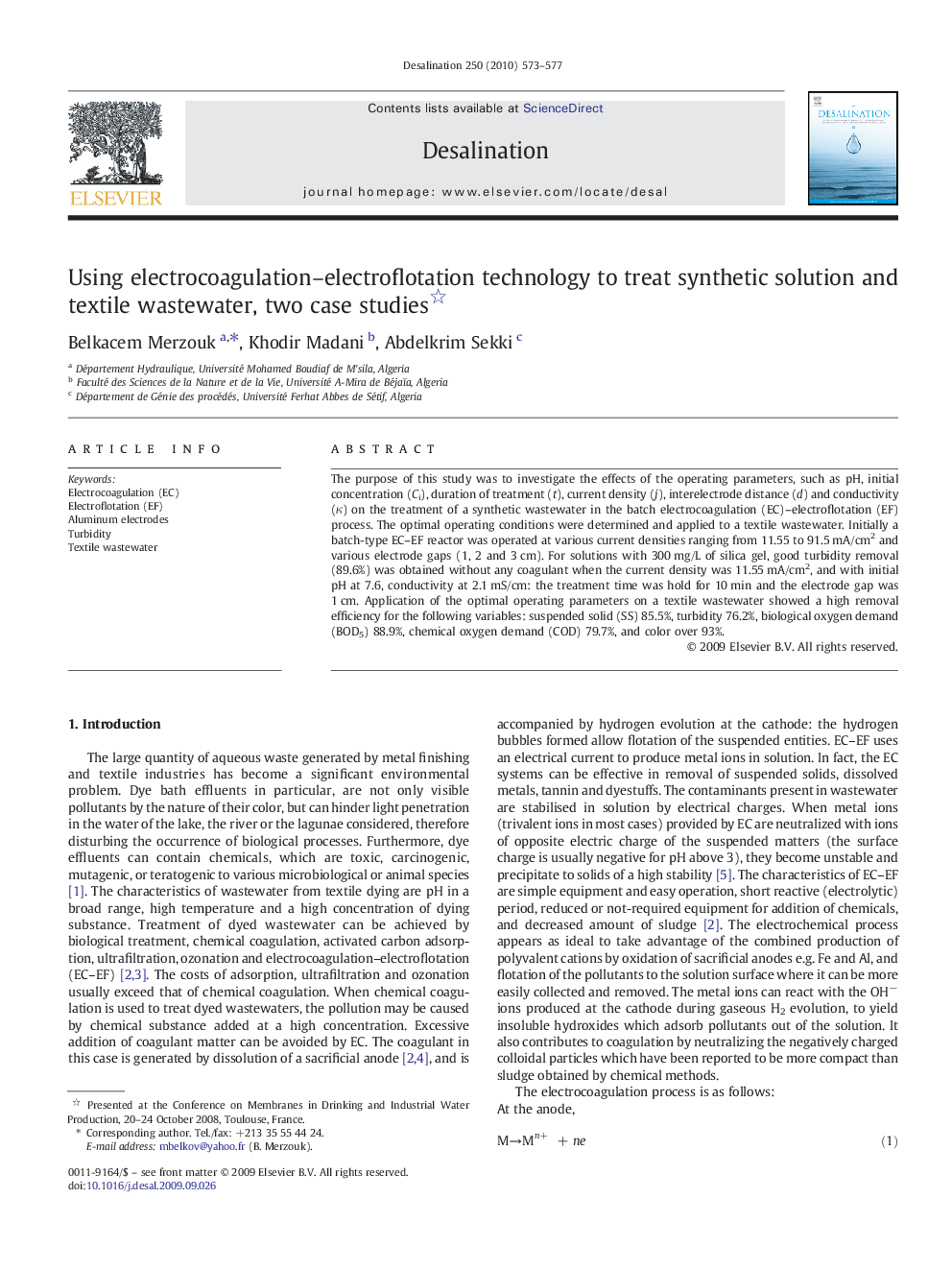| کد مقاله | کد نشریه | سال انتشار | مقاله انگلیسی | نسخه تمام متن |
|---|---|---|---|---|
| 626049 | 882864 | 2010 | 5 صفحه PDF | دانلود رایگان |

The purpose of this study was to investigate the effects of the operating parameters, such as pH, initial concentration (Ci), duration of treatment (t), current density (j), interelectrode distance (d) and conductivity (κ) on the treatment of a synthetic wastewater in the batch electrocoagulation (EC)–electroflotation (EF) process. The optimal operating conditions were determined and applied to a textile wastewater. Initially a batch-type EC–EF reactor was operated at various current densities ranging from 11.55 to 91.5 mA/cm2 and various electrode gaps (1, 2 and 3 cm). For solutions with 300 mg/L of silica gel, good turbidity removal (89.6%) was obtained without any coagulant when the current density was 11.55 mA/cm2, and with initial pH at 7.6, conductivity at 2.1 mS/cm: the treatment time was hold for 10 min and the electrode gap was 1 cm. Application of the optimal operating parameters on a textile wastewater showed a high removal efficiency for the following variables: suspended solid (SS) 85.5%, turbidity 76.2%, biological oxygen demand (BOD5) 88.9%, chemical oxygen demand (COD) 79.7%, and color over 93%.
Journal: Desalination - Volume 250, Issue 2, 15 January 2010, Pages 573–577